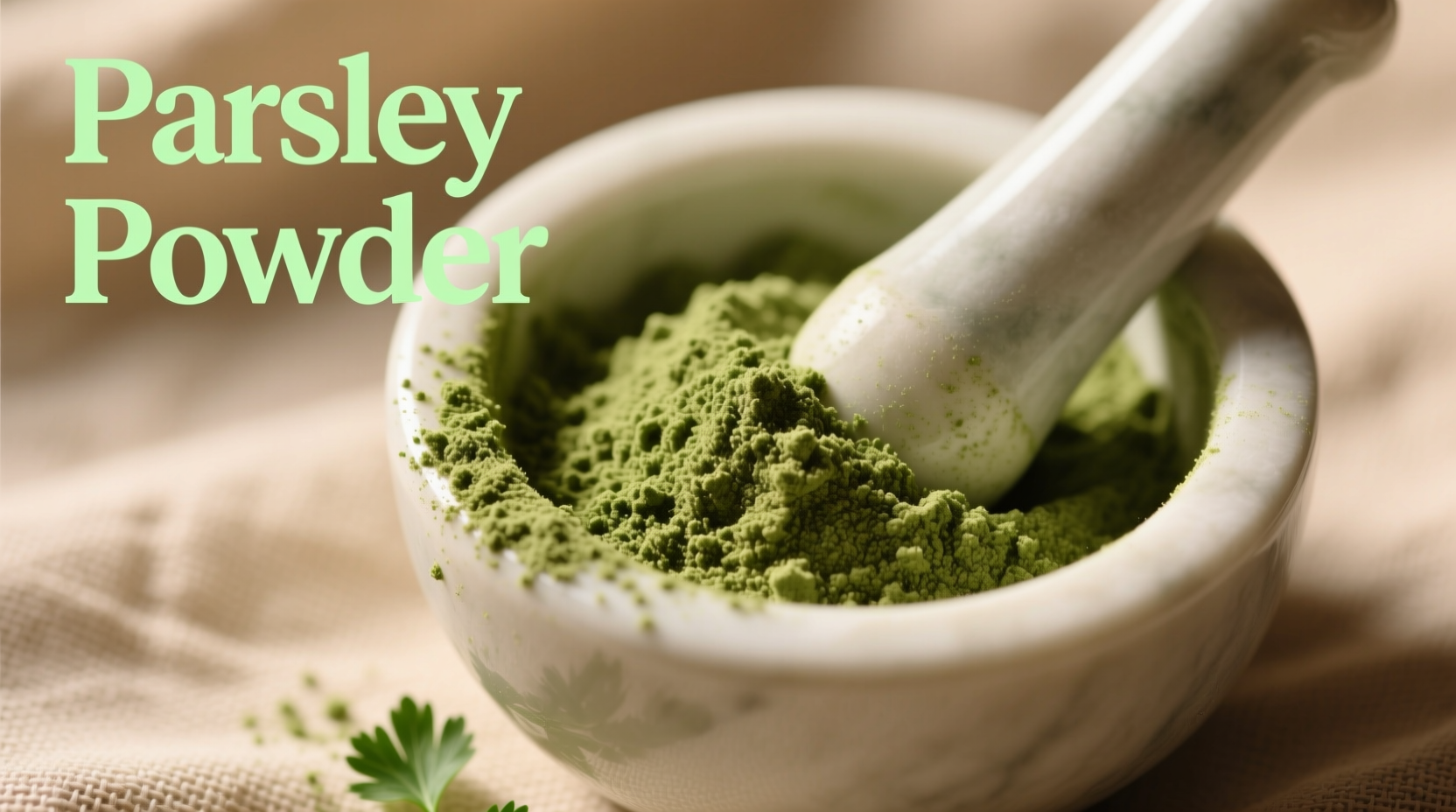Unlock the Full Potential of Parsley Powder in Your Kitchen
Have you ever wondered why professional chefs keep parsley powder in their spice racks alongside fresh bunches? This versatile dried herb delivers consistent flavor, extended usability, and surprising nutritional benefits that make it an essential pantry staple. Whether you're meal prepping, lacking fresh herbs, or seeking deeper flavor integration in your dishes, understanding parsley powder's unique properties transforms how you approach seasoning.
What Exactly Is Parsley Powder and How Is It Made?
Parsley powder represents dehydrated curly or flat-leaf parsley ground to a fine consistency. Unlike freeze-dried alternatives that preserve cellular structure, quality parsley powder undergoes controlled dehydration at temperatures below 115°F (46°C) to maintain nutritional integrity before milling. This process concentrates flavors while eliminating moisture that causes spoilage.
The best commercial products use organically grown parsley harvested at peak maturity, with no fillers or anti-caking agents. When making your own, proper dehydration technique proves crucial—too high temperatures destroy volatile oils, while insufficient drying invites mold growth during storage.
Nutritional Profile: How Powder Compares to Fresh
While fresh parsley boasts higher vitamin C content, the dehydration process surprisingly preserves certain nutrients more effectively. According to USDA FoodData Central analysis, parsley powder maintains significant nutritional value despite volume reduction:
| Nutrient (per 1 tsp) | Parsley Powder | Fresh Parsley (1 tbsp) |
|---|---|---|
| Vitamin K | 85 mcg (71% DV) | 24 mcg (20% DV) |
| Vitamin A | 1,300 IU (26% DV) | 420 IU (8% DV) |
| Vitamin C | 1.5 mg (2% DV) | 5 mg (8% DV) |
| Iron | 0.6 mg (3% DV) | 0.2 mg (1% DV) |
This concentration effect makes parsley powder particularly valuable for vitamin K intake, essential for blood clotting and bone health. The dehydration process reduces water-soluble vitamin C but concentrates fat-soluble vitamins A and K. For optimal nutrient retention, choose products processed using low-temperature dehydration methods rather than high-heat drying.

Practical Culinary Applications You Need to Try
Understanding when to use parsley powder versus fresh transforms your seasoning approach. Consider these professional kitchen techniques:
Building Flavor Foundations
Add 1/4 teaspoon parsley powder to your mirepoix or sofrito at the beginning of cooking. Unlike fresh parsley which loses flavor when cooked long, the concentrated powder integrates seamlessly into the flavor base of soups, stews, and sauces. This technique creates layered herb notes that remain detectable even after hours of simmering.
Perfecting Dry Rubs and Spice Blends
Parsley powder's fine texture makes it ideal for dry rubs where fresh parsley would burn. Combine with garlic powder, onion powder, and lemon zest for an exceptional fish seasoning. The powder adheres better to proteins and distributes flavor more evenly than chopped fresh herbs.
Enhancing Visual Appeal Without Texture
When you want parsley's color without its texture—such as in smooth soups or delicate sauces—stir in 1/8 teaspoon powder at the end of cooking. This provides vibrant green hue without the speckled appearance of chopped fresh parsley.
Storage Guidelines for Maximum Freshness
Proper storage determines how long your parsley powder maintains flavor and nutritional value. Unlike fresh parsley that wilts within days, properly stored powder remains usable for 18-24 months. Follow these evidence-based storage recommendations from the National Center for Home Food Preservation:
- Store in airtight glass containers away from light and heat sources
- Maintain humidity below 60% to prevent clumping and mold growth
- Keep away from strong-smelling spices that can transfer odors
- Refrigeration extends shelf life but requires careful moisture control
Commercial products typically include a "best by" date 18 months from production. For homemade versions, store in the freezer for maximum longevity—properly frozen parsley powder maintains quality for up to 3 years. Always check for color fading or musty smells, which indicate degradation.
Creating Your Own Parsley Powder: A Step-by-Step Guide
Making your own ensures maximum freshness and avoids potential additives. Follow this professional method:
- Wash fresh parsley thoroughly and spin dry in a salad spinner
- Remove thick stems but keep tender leaf stems for added flavor
- Spread in single layer on dehydrator trays or baking sheet
- Dehydrate at 95°F (35°C) for 6-8 hours until brittle
- Grind in spice grinder to fine powder consistency
- Sift through fine mesh strainer to remove larger particles
- Store immediately in airtight container
The key to successful homemade powder lies in complete dehydration—any residual moisture causes spoilage. Test for dryness by crushing a leaf between fingers; it should shatter rather than bend. For intensified flavor, try briefly toasting the dried leaves before grinding, which enhances the aromatic compounds.
Common Questions About Parsley Powder
Understanding these frequently asked questions helps optimize your use of this versatile ingredient:











 浙公网安备
33010002000092号
浙公网安备
33010002000092号 浙B2-20120091-4
浙B2-20120091-4